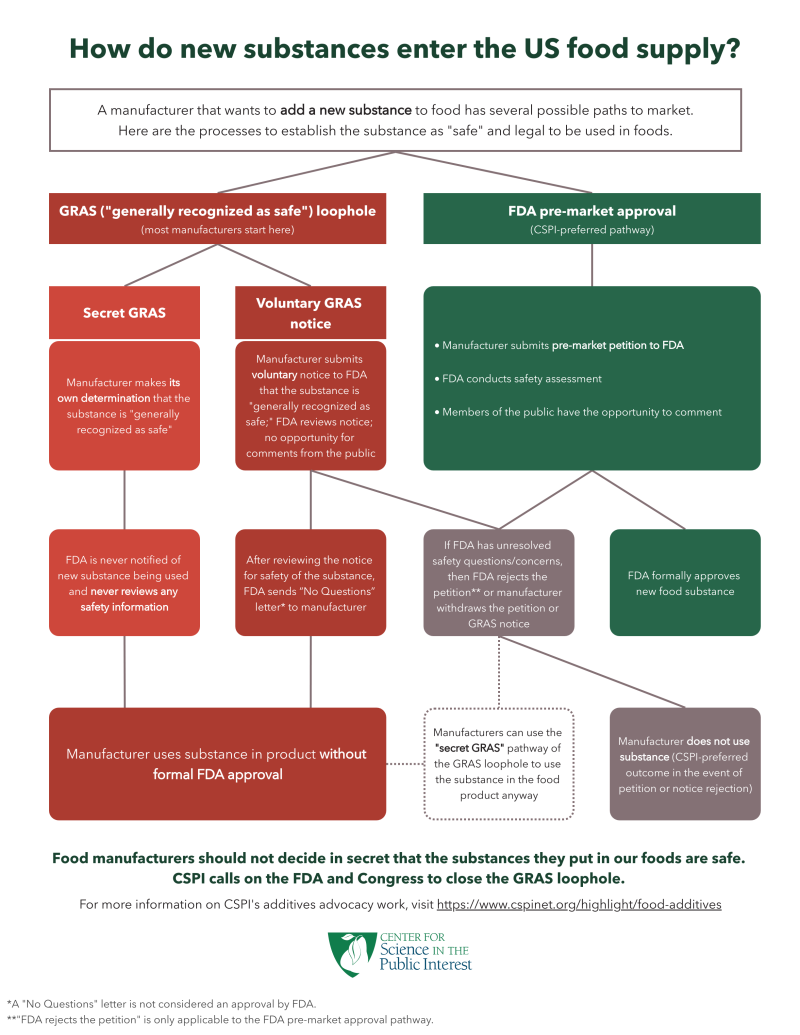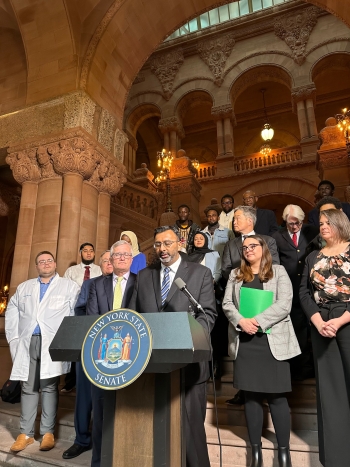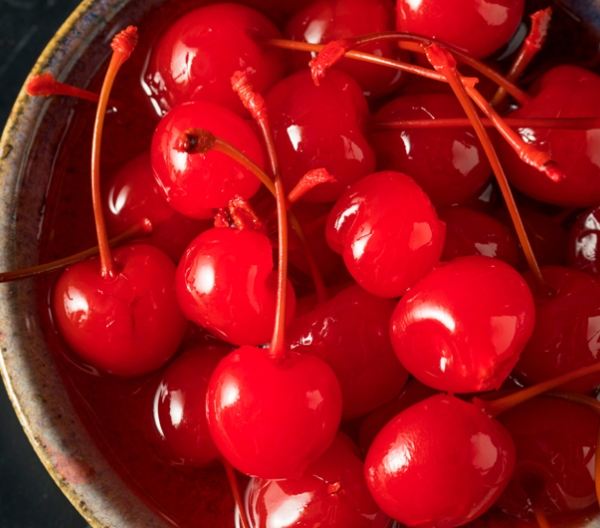How food companies sneak new ingredients past the FDA

Centre for Ageing Better - unsplash.com.
Food manufacturers use a legal loophole to introduce new food ingredients without FDA review—endangering public health and leaving consumers in the dark about what’s in our food. Here’s what you should know about the FDA’s review process for new food ingredients, what’s in artificial and natural flavors, and how a new bill in New York could close this loophole for good.
How the FDA approves new food ingredients
Food and beverage companies have three pathways for introducing a new food ingredient to the market.
From a consumer safety standpoint, the first and best option is to have the FDA review the chemical and determine that it is safe before it’s used in food (premarket approval). But in reality, few food companies seek FDA review for new food chemicals because they know there are two more ways to bypass FDA and get their ingredients into our food—no FDA approval needed.
‘Generally recognized as safe’
The 1958 Food Additive Amendment to the Federal Food, Drug, and Cosmetic Act created a loophole for food ingredients “generally recognized as safe,” or GRAS, exempting them from FDA approval requirements. This exemption was intended to allow common food ingredients—like vinegar, flour, baking soda, or standard spices—to bypass safety reviews and become available to all food manufacturers.
The Food Additive Amendment states that for a substance to be GRAS, it should be generally recognized as safe “among experts qualified by scientific training and experience to evaluate its safety,” and that safety should be “adequately shown through scientific procedures.” However, the statute doesn’t explain how that “recognition” should be carried out. Congress left it up to the FDA to provide details on who these experts could be, what their training and experience might look like, and what role the FDA itself might have in confirming the validity of the determination.
Legal loopholes in the food ingredient approval process
At first, the FDA maintained some control over the GRAS process, publishing lists of substances that the agency confirmed were “generally recognized as safe.” But in 1997, the FDA gave up any claim to controlling the process, proposing new rules that gave the food and beverage industries the authority to self-certify that a new food chemical was safe—legally GRAS—without any FDA oversight. The FDA also created a voluntary notification system through which a company could inform the FDA, if the company chose to do so, that it had determined a chemical to be GRAS.
Once a GRAS notice is submitted, the FDA has 30 days to review, and can respond with a letter stating that the FDA has no questions about the basis for the GRAS determination. Alternatively, the FDA can question whether the notice provides a sufficient basis for a GRAS determination. Either way, the company is free to start using the substance since the GRAS determination is made by the company—not the FDA. This is the second pathway that companies can follow in order to add new ingredients to our food.
The third route is even more problematic: Given that GRAS notices are entirely voluntary, a food company can simply choose not to notify the FDA after it makes a GRAS determination. The company can then start using the substance in food without the FDA’s knowledge, let alone its approval (we call this pathway within the GRAS loophole the “secret GRAS” pathway). The public cannot know how many of these secret GRAS determinations occur every year because there is no requirement to report them.

Some companies may not do any safety review at all, and simply start using the chemicals in food without considering the risks. While this practice is illegal, the FDA has no way to compel companies to demonstrate that they conducted an adequate safety review before using the chemical, so enforcing the requirement for a GRAS review is extremely difficult.
For example, there is no public evidence that the ingredient tara flour was determined to be GRAS by experts before it was marketed in “crumbles” sold by Daily Harvest. That product was tied to a devastating outbreak in June 2022, when 393 people were sickened, and 133 were hospitalized, some with permanent organ damage, after eating the Daily Harvest products. While the FDA was unable to confirm what caused these adverse illnesses definitely, it identified tara flour as an ingredient of interest. Had more work been done to test and vet this ingredient before adding it to foods—and had the FDA been notified or petitioned for approval—this mysterious outbreak may well have been prevented.
Where secret ingredients hide in foods
Because of the secret GRAS pathway, the FDA often does not know that a new food chemical even exists until after it is sold in stores and appears on a food’s ingredients list. However, some secret GRAS chemicals may never appear on an ingredient list.
Because companies can hide food ingredients behind the vague terms “natural flavor,” “artificial flavor,” or “spices,” not even the FDA knows which GRAS substances have been added to our foods. Since the flavor industry widely exploits the GRAS loophole, only the companies selling these ingredients can attest to their safety, which is a clear and troubling conflict of interest. In practice, flavor and food companies decide whether their flavor chemicals are safe, not the FDA.
How this loophole enables supplement companies to sell dangerous, untested products
Dietary supplements have different regulations than food ingredients. But one area of overlap between the two involves this legal loophole: Ingredients “generally recognized as safe” are permitted for use in supplements without additional FDA review.
This means that a food, supplement, or chemical company can introduce a new ingredient to foods through the GRAS loophole or secret GRAS pathway, and then supplement manufacturers are permitted to sell products containing this unapproved and potentially untested and unsafe ingredient. The danger to public health is obvious: Here is an ingredient, new to the food supply and available to food and supplement-makers, that has only been assessed for safety in secret by those who can make money from it.
Not only could these ingredients be harmful to consumers who unknowingly eat them in foods, but supplements with larger quantities of these ingredients could be especially dangerous.
New York bill could close the ‘secret GRAS’ pathway for good

In 1958, the GRAS exemption was a commonsense rule to avoid overburdening federal regulators with having to approve vinegar and flour. Since then, though, the food industry and FDA have turned the GRAS exemption into a loophole so big it has almost completely eclipsed the requirement that new food chemicals receive premarket FDA approval. Congress hardly could have intended this absurd result, yet that is exactly what is now occurring for most new food chemicals entering the food supply in the US.
A piece of legislation in consideration in the New York State legislature could reform the way food companies introduce new food ingredients. The bill, S8615/A9295, introduced by NY Assemblymember Dr. Anna Kelles and Senator Brian Kavanagh, would require companies that sell, distribute, or market food products in New York to report all secret GRAS substances to the New York Department of Agriculture—including those hiding inside “natural flavor,” “artificial flavor,” and “spices.” If the bill becomes law those ingredients and the safety information submitted by industry will be published in a public database, offering a level of transparency into food chemical safety previously unavailable to consumers or even the FDA.
How CSPI is working to eliminate secret food ingredients
Industry should not be allowed to decide in secret what is safe for us to eat. That’s why CSPI is leading efforts to support the bill in New York state while also working to reform federal laws and regulations to ensure all American consumers are protected from unsafe food chemicals.
Sign our petition to remove harmful additives from US foods
How you can avoid harmful food additives
Consumers can rely on CSPI’s database of food additive safety, Chemical Cuisine, to avoid many unsafe food additives. Chemical Cuisine rates additives from “Safe” to “Avoid,” and readers can search or scroll our consumer tool while shopping to decide which food additives to avoid, cut back, or enjoy freely. But remember, not all ingredients show up by name on food ingredient lists, and even if it is listed by name, it hasn’t necessarily been approved by the FDA.

Stirring the Pot
Join the fight for safer, healthier food
Sign up to receive action alerts and opportunities to support our work in Stirring the Pot, our monthly newsletter roundup.

